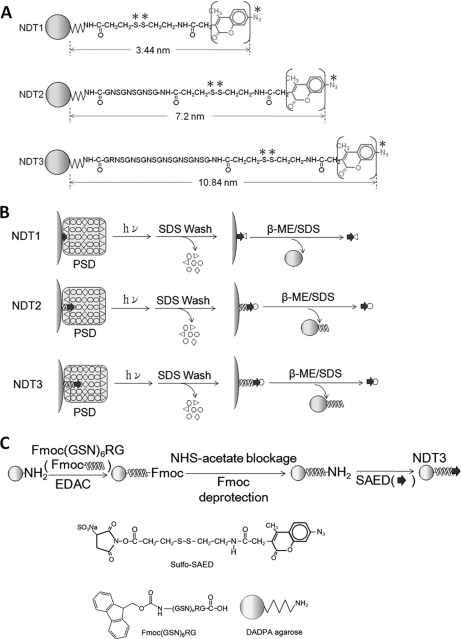Fig. 1.
Chemical structures, application and syntheses of NDT reagents. A, Chemical structures of NDT1, NDT2, and NDT3. The functional azido group and cleavable disulfide bond are indicated by symbols * and **, respectively. The fluorophore, 4-methylcoumarin, is in parentheses. B, The application of NDT reagents for isolating proteins residing at different depths of the PSD. NDT reagents are incubated with the PSD. The reaction mixtures are subject to UV irradiation to activate the azido groups of these reagents, thereby resulting in the formation of covalent links between the reagents and proteins surrounding the azido groups. The beads are first washed with a SDS-containing solution to remove non-covalently bound proteins and subsequently with a solution containing both SDS and β-ME to release those proteins covalently linked to the beads for further analyses. C, Synthesis of NDT3. The chemical structures of sulfo-SAED, synthetic Fmoc- 20-mer peptide and DADPA agarose bead used in the synthesis are also shown.

